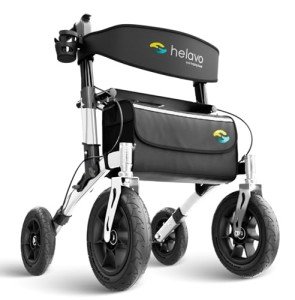Mobility is a basic aspect of day-to-day living, and for lots of people, particularly the elderly and those with mobility difficulties, walkers can substantially enhance self-reliance and safety. An easy-to-use walker can be the difference in between depending on assistance and regaining autonomy. This post aims to check out different kinds of walkers, their features, and how individuals can select the right walker according to their requirements.
Walkers come in a number of designs customized to specific needs, levels of mobility, and individual choices. The following table sums up the most common kinds of walkers, their features, and possible benefits.
| Walker Type | Description | Advantages |
|---|---|---|
| Requirement Walker | A lightweight, fundamental frame with four legs. | Offers stability and support; easy to maneuver. |
| Two-Wheeled Walker | Features two wheels at the front for easy mobility. | Provides support while permitting smoother motion. |
| Four-Wheeled Walker | Likewise referred to as a rollator, it has four wheels. | Permits greater mobility and consists of a seat for resting. |
| Knee Walker | Created for people with foot or ankle injuries. | Allows users to rest weight on the knee while sliding with the other leg. |
| Chair Walker | Integrates a walker with a seat and storage. | Supplies convenience for longer ranges; excellent for resting. |
| Foldable Walker | Can be folded for easy transport and storage. | Portability makes it perfect for travel. |
Picking the best walker is essential for ensuring safety and comfort. Below are essential factors to think about:
Mobility Level: Assess the user's existing mobility and balance. Those who require maximum stability may take advantage of a standard walker, while more mobile users may choose a rollator.
Weight Capacity: Walkers are created with particular weight limitations. Constantly examine the maker's guidelines to make sure security.
Height Adjustment: An appropriately fitted walker is necessary for comfort. Try to find adjustable height choices to guarantee it suits the user's stature.
Surface area Type: Consider where the walker will mainly be used. Some walkers are better fit for outdoor use, while others might work best on carpets or inside.
Storage Needs: If the user often brings personal items, walkers with baskets or trays might be beneficial.
Walkers have actually developed to include different features focused on improving user experience. Some notable features consist of:
Hand Grips: Ergonomically designed hand grips contribute to comfort and control.
Brakes: For rollators, look for reliable brakes which supply included security when slowing down or stopping.
Weight: Lightweight products enhance maneuverability and ease of transport.
Seat and Backrest: For users who might need to rest, options with seats and backrests offer much-needed support.
Accessories: Consider extra products like trays, baskets, or lights that can enhance walker Top Performance Walker.
Picking an easy-to-use walker can bring many benefits for users and caretakers alike:
Increased Independence: Walkers lower dependence on others, empowering users in their daily routines.
Improved Safety: They provide important support and balance, minimizing the risk of falls and associated injuries.
Improved Advanced Mobility Aid: Walkers permit individuals to maintain mobility even with limited physical abilities.
Activity Encouragement: Using a walker can inspire users to engage in regular movement, promoting overall health.

Social Interaction: Increased mobility encourages users to participate in social activities, improving emotional well-being.
1. How do I know which walker is right for me?
Choosing the right Comfortable Walker includes evaluating your mobility needs, weight capability, and personal preferences. Consulting with a health care specialist can likewise offer valuable insights.
2. Are walkers covered by insurance?
Many insurance plans, consisting of Medicare, will cover walkers if they are considered clinically required. It's best to inspect with your plan for specific coverage details.
3. How can I maintain my walker?
Regular upkeep includes examining wheels and brakes for damage, cleaning the frame, and examining rubber tips for wear.
4. Can I utilize a Stylish Walker outdoors?
Yes, there are specific walkers created for outdoor usage, such as four-wheeled rollators, which use higher stability on different surfaces.
5. What is the typical weight limit for walkers?
Weight limitations can vary widely depending on the design and manufacturer. Many basic walkers support approximately 300 pounds, however it's vital to examine individual specifications.
An easy-to-use walker is more than just a tool; it represents self-reliance and dignity for many users. Whether it's a lightweight basic walker, a feature-rich rollator, or a specialized knee walker, the choices are huge and diverse. By comprehending the different kinds of walkers offered, thinking about essential features, and recognizing the substantial advantages they provide, people can make informed choices that align with their requirements.
Remember, while this guide acts as a fundamental resource, it is always a good idea to talk to a health care expert for customized suggestions. By picking the right walker, people can actively engage in life, maintain their mobility, and pursue their enthusiasms without limit.
No Data Found!

